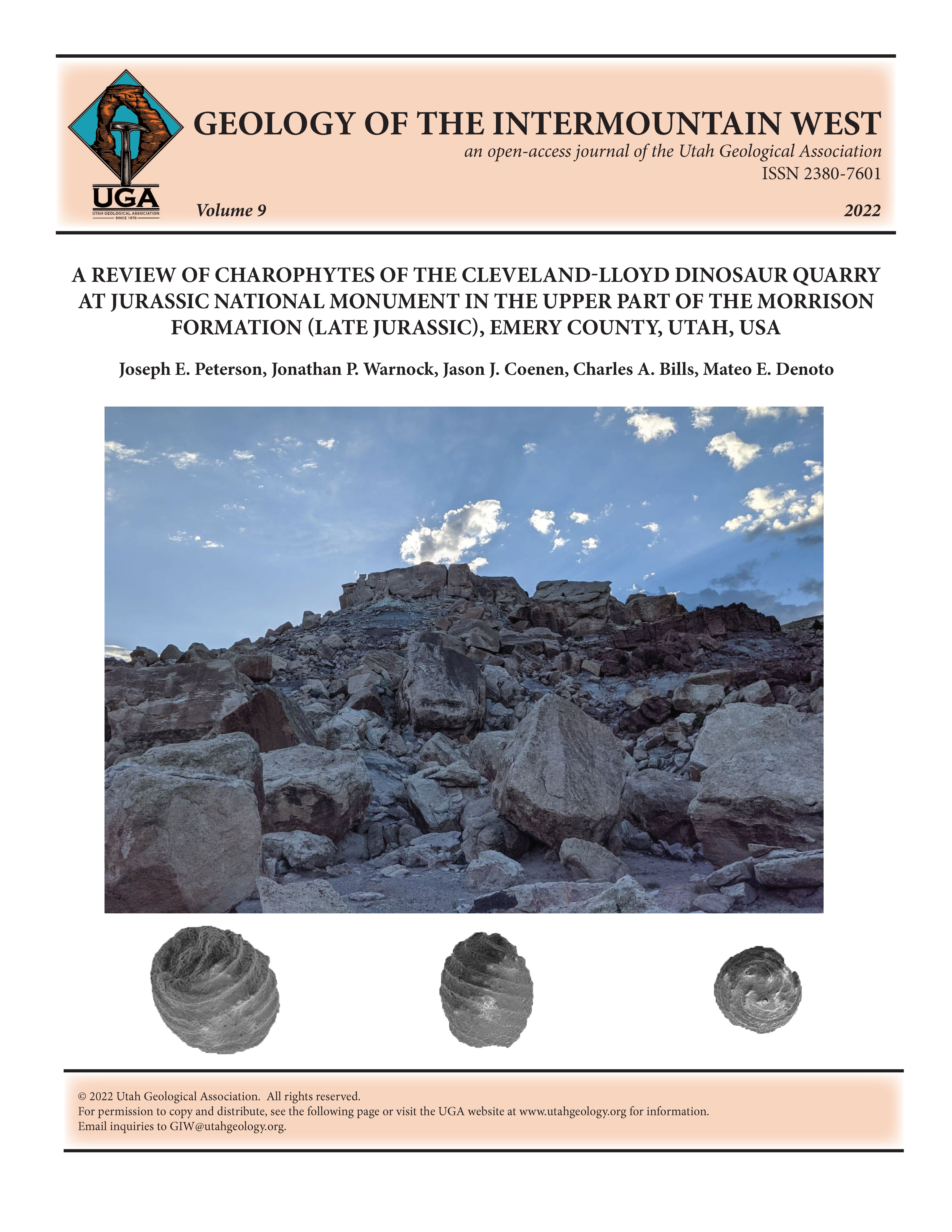A Review of charophytes of the Cleveland-Lloyd Dinosaur Quarry at Jurassic National Monument in the upper part of the Morrison Formation (Late Jurassic), Emery County, Utah, USA
Abstract
The Cleveland-Lloyd Dinosaur Quarry at Jurassic National Monument in central Utah has been extensively studied for nearly 80 years. During this time, studies have heavily focused on the taphonomy, depositional setting, and potential behavioral inferences of the most dominant vertebrate taxon at the quarry, Allosaurus fragilis. However, despite their importance for paleoecological interpretations, microfossils from the quarry, such as charophytes and ostracods, have been conspicuously absent from any detailed discussion in the literature. Here we present a review of the known taxa of charophytes from the Cleveland-Lloyd Dinosaur Quarry and test the variability of abundance and taphonomic conditions throughout the quarry deposit. Our results indicate that significant differences in charophyte abundances exist in the lower and upper parts of the quarry, and a wide variance of taphonomic conditions is present in charophyte gyrogonites in the uppermost contact with the overlying carbonate bed. These results support prior interpretations of the Cleveland-Lloyd Dinosaur Quarry as an ephemeral pond and bring further attention to the importance of microfossils in paleoecological reconstructions.





